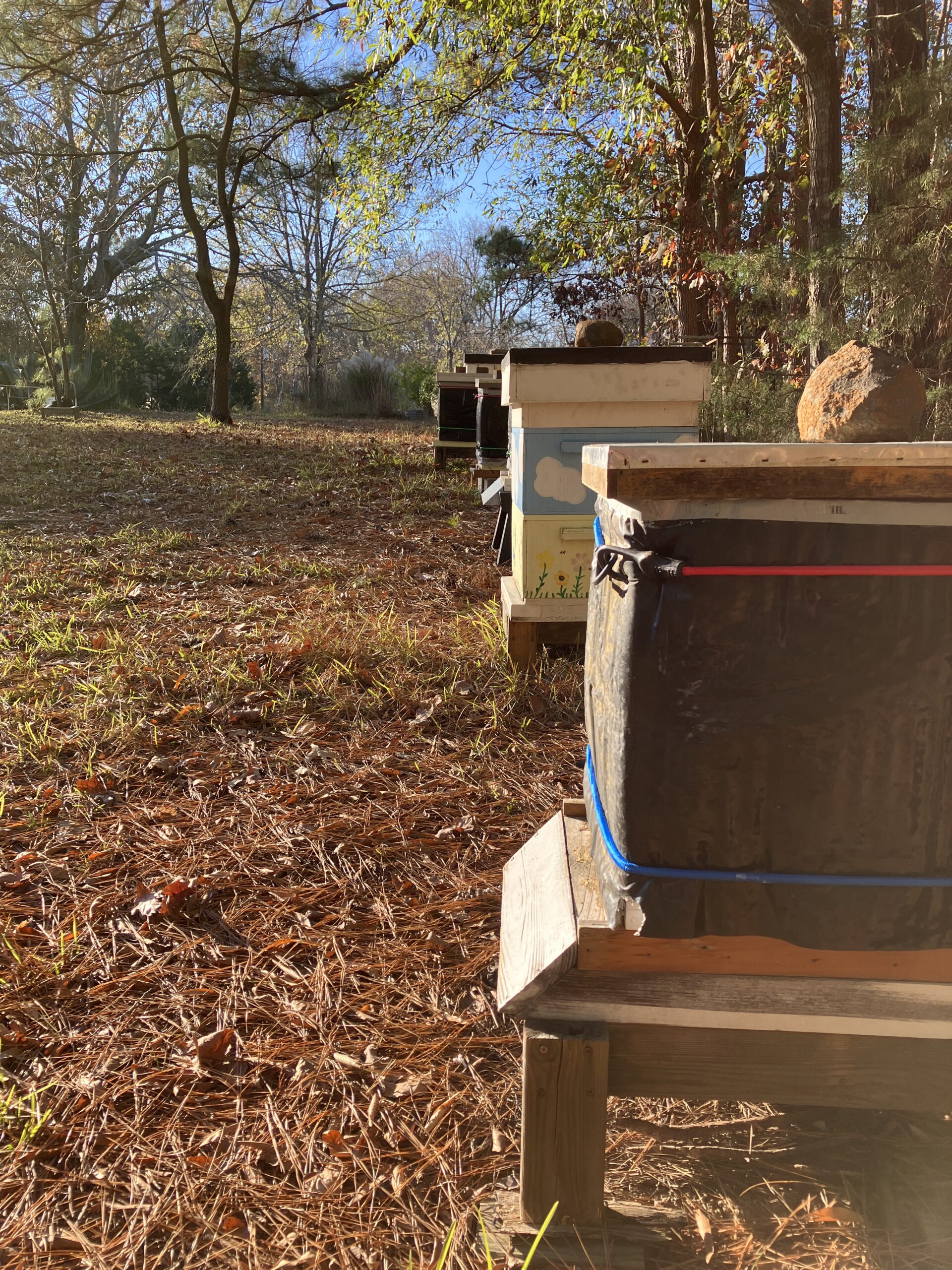The winters in North Carolina (almost in South Carolina) are not too cold, but we do get occasional blasts of cold air from the north. I’ve seen temps in the teens before.
When it comes to winterizing my bees, I like to give them all the benefits that I can provide. For me that means wrapping my hives with an insulation of some kind. I found some wraps on a website a few years ago and ordered them. I then reinforced the wrap with another layer of rolled insulation that I found in a big box store.

In the above picture, you see some wrapped and some are not wrapped. Those that are not wrapped were constructed with insulation in the walls of the hive. The second hive in this line has the Langstroth layout with much thicker walls to hold the insulation. This hive has been a very productive and vigorous hive.
The specially built hives are for my experimentation with insulating a hive. So many beekeepers state that there is no need to insulate, but my thoughts on this are that a tree in the woods has more insulation than a Langstroth hive, which consists of pine wood sides about an inch thick.
Prior to the weather changing in my area, I fed the hives 2 to 1 sugar syrup. That is 2 cups of sugar to one cup of water. It has gotten difficult in my area to access sugar syrup, so this year I made my own. I am a big fan of leaving enough honey for the bees to get through the winter. After having to make the sugar syrup, I am even a bigger fan of that idea!!
I started this process of feeding in early October, giving the bees time to put the syrup into cells and reduce the water even further, just as they do with nectar from a flower. The bees cannot do this process when the day temperatures consistently hits in the 50’s. So feeding must be done when temps are 60’s or 70’s during the day.
The other method of feeding is called “Mountain Camp” feeding. I did that last year. Not a fan of that method.
Another duty at this time of year is to change the entrance reducer to the smallest opening. This prevents critters from entering the hive. Critters like mice will invade a hive if they can. Bees (and me) hate the stink of a mouse, so it is best to avoid that problem. The past 2 years, I have not changed my entrance reducer size. I leave it on the smallest opening all year long. It has been proven that they prefer the smaller opening throughout the year.
Since my apiary has grown in 2022, I had more tasks to complete – more hives to winterize. I now understand why those with 100’s of hives do not do the whole process that I do. If my apiary grows again next year like it did this year, I may have to rethink my winterization process too. More hives – More work…..but I’m OK with that. It’s all a part of learning what is best for my bees!!
So my year of beekeeping has ended. I will not open any of the hives until around the end of February or early March. In North Carolina, those are the months that we see available pollen and foraging for the bees. Opening the hives during the winter will set your bees back and maybe even kill some. It is not a good practice to allow the cold air of winter to penetrate the hive. If you break that propolis seal, the bees do not have the resources to restore it.
In the winter….. TAKE A BREAK AND LEAVE THE BEES ALONE!!!!
I will do a quick blog for December, but it is now time to enjoy the holidays with friends and family. Your honey from your bees make wonderful, appreciated gifts. My Christmas list is always the same…….Fresh Local Honey to all!
NAMASTE’



